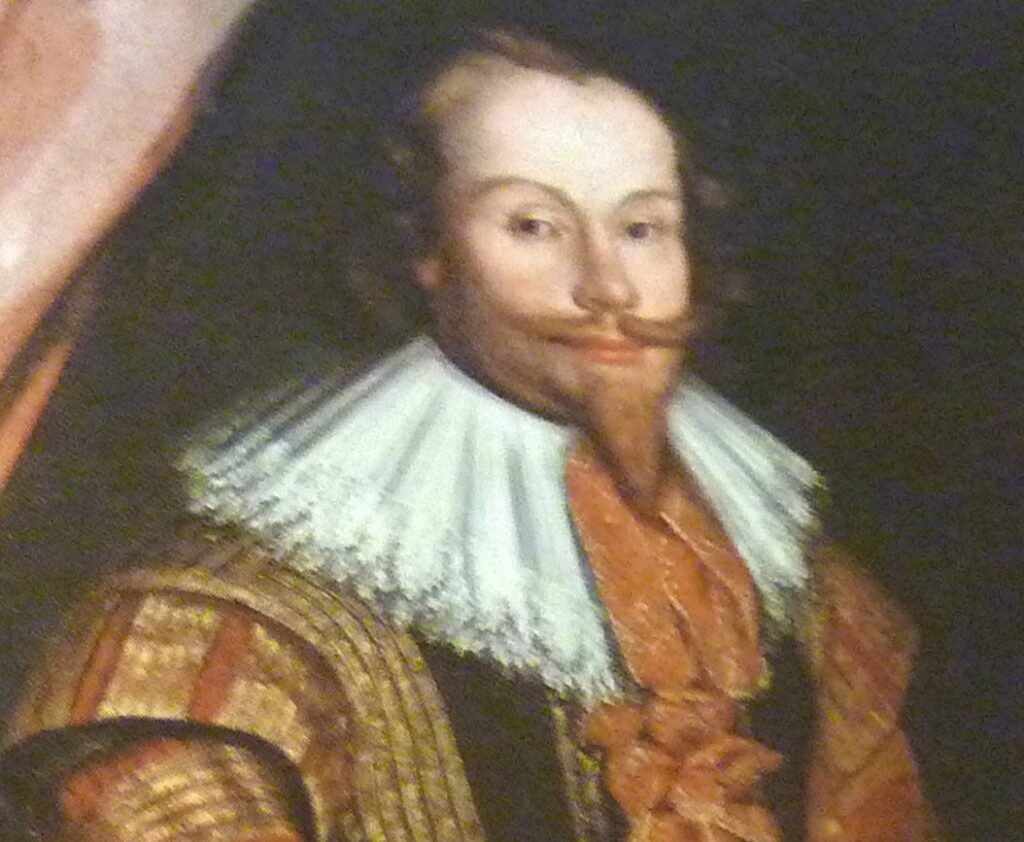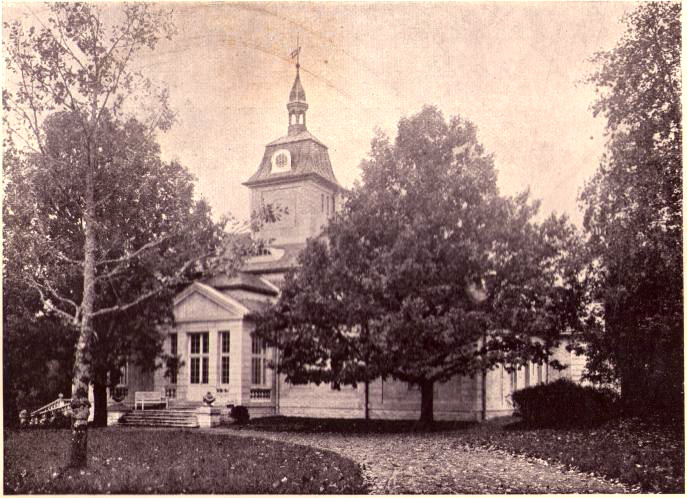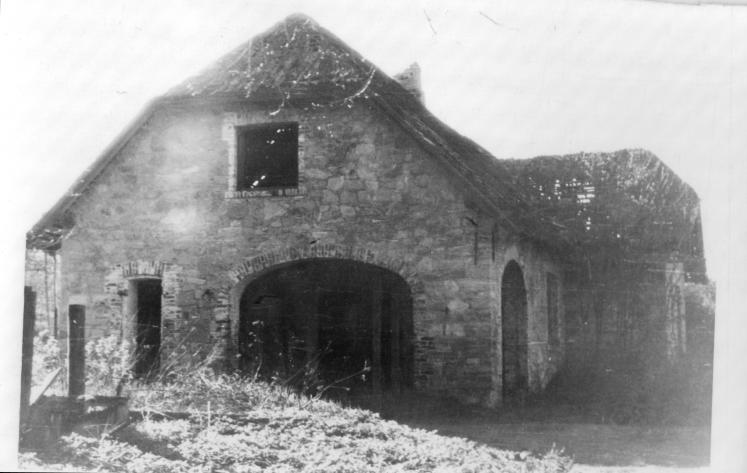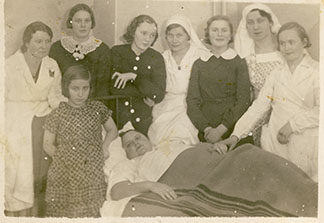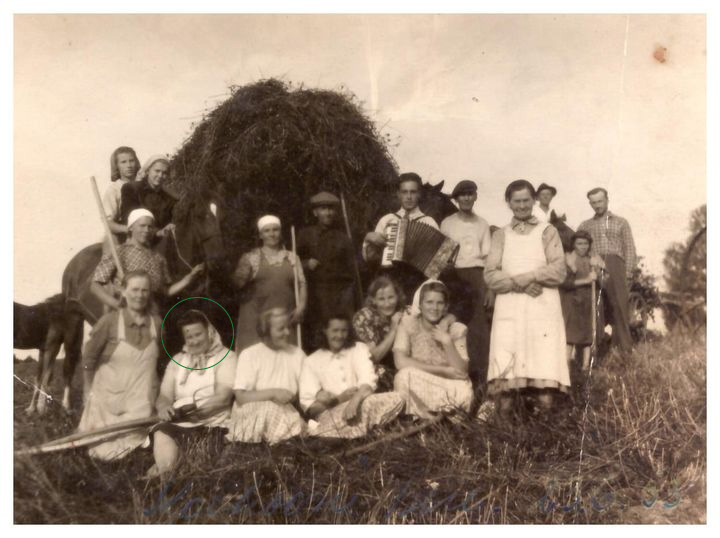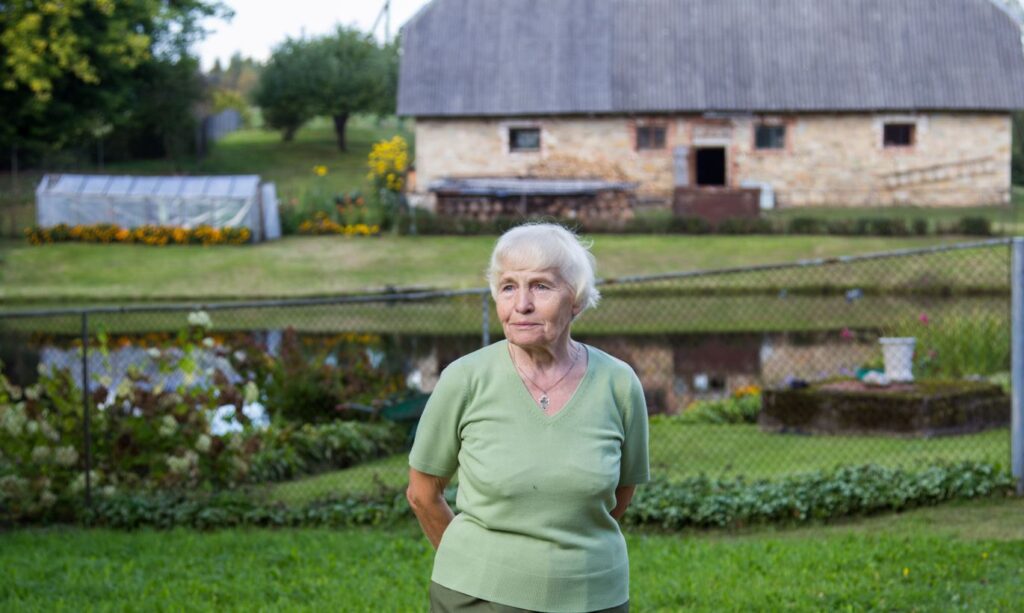Järve Farmhouse is located in the former areas of Taheva Mansion. The old vodka distillery and vodka cellar have been preserved. Taheva Mansion was first mentioned in 1627. The owners of the manor have been the families of von Delwigs and von Koskulls and von Wulf.
The main building of the manor with a neo-baroque style tower was built according to the project of August Reinberg and was completed in the first decade of the 20th century. The main building of the manor was destroyed in 1944, part of the walls and fragments of the veranda have been preserved.
Back in Time
Mansion is mentioned first time 1627
Taywaküll (“heaven” + “village”) is a common variant in folklore.
Taheva’s name appears in historical sources in the 16th century as a place and village name: 1541 (Wacke) Tayewes, 1551 Tayuen, Tayues, 1582 Thaiwenkul, 1627 Taywa, 1688 Taiwola, Taiwula, 1711 Taiwala and as a manor name 1782 Taiwola, 1826 Taiwola, 1909 Taiwola or Taheva manor. In addition, an undated record by Taywaküll (Rev 1624/27: 97; Uustalu 1972: 131–132).
It is believed that the name is based on an appeal to the taival ~ taipale (Tarvel 1975), which in Finnish means “the distance between two places, road, distance” or “itinerary, journey, hike, trip”, also “‘higher place between waters”. An earlier meaning may also have been “a turning or branching point in the landscape” (SSA: taipale). The latter meaning fits well with Taheva’s name. Just near Taheva, the Mustjõgi River flows into the Koiva River. This waterway to Riga has been running for a long time and for another XX century.
Baron Axel Gustafsson Banér (1594-1642)
Until 1800 was mansion Under the Vastse-Roosa mansion. Records from this time are little. We know there was war between Swedish king and Polish king in this areas. In the year 1629 the war was over and all the area went Under Swedish control. This time is called in Estonia „Good old Swedish Time“
In the year 1626-1629 King Gustav Adolf had war between Poland. The Gustav Adolf army von the war and all the area went under Swedish king control. King Gustav Adolf gived the mansion to Axel Gustafsson Banér.
Baron Bernhard Reinhold von Dellwig (1711–1770)
Bengt Klasson Horn owns the Mansion until the year 1745 when Empress of Russia the Elizabeth Petrovna, daughter of Peter the Great gave the mansion to the Bengt Klasson Horn granddaughter Catharina Regina Hornile and her husband Bernhard Reinhold von Delwig. Bernhard Reinhold von Delwig was working for Schleswig-Holstein as a “Kindralfeldmarssal”.
Before this date Bernhard Reinhold von Delwig history is not so nice. From the old chroniclers we can read about him.
Bernhard Reinhold von Delwig who was the Swedish cavalry officer. Unfortunately, hes beautiful warrior career ended unhappily. He was listed in 1723 for embezzling numerous clothing parcels from his regiment. The General Court of War convinced him of a number of irregularities in connection with this, he had sold trust notes, trust horses and grain for «good money» but handed in the payment in coins. He was sentenced Oct. 15. 1723 to large compensation amounts and to lose his life, but was spared. By mercy for previous merits from the life sentence. However, he would be taken to Bohus Fortress and sit there, until he cleared all wrongs with the regiment; his movable and immovable property was sequestrated and sold.
He escaped to Norway. 1724 in Fredrikshald he begged for mercy. He was allowed to return on hire to try to sort out his business, but was now completely destitute and applied to visit Livonia to look after his wife’s property there. What was Taheva Mansion.
Axel Wilhelm von Delwig (1749-1797)
In the year 1780 after heritage sharing contract the mansion finally went to Bernhard Reinhold von Delwig sun to Axel Wilhelm von Delwig. He was not the best owner. Locals was calling him „cruel major“
Gottlieb Heinrich Theodor von Koskull (1774-1834)
In the year 1808 Karl Georg von Koskull pledged the mansion on his brother Gottlieb Heinrich Theodor von Koskull with the price 80 000 silver ruble.
Eduard Theodor von Wulf (1823-1900)
1844 Eduard Theodor von Wulf, the youngest son of Wulf, inherited the manor and married Elisabeth Charlotte von Styrk from Tihemets in 1850.
He was the mansion owner over 50 years.
Birth of Taheva Mansion
This is the map from year 1905. Inside yellow area are the buildings what we own and location of the main building marked with a red circle.
The Estonian Historical Archives does not contain data on the building of the manor before 1867. In year 1867 there is written evidence of Taheva vodka distillery, ox stable and feed barn.

Vodka Distillery an Ox Stable 1980s. Photo by Andrus Uppin 1989-1991.

Feed Barn 1980s. Photo by Andrus Uppin 1989-1991.
Hermann Maximilian von Wulf (1865-1923)
After Eduard teath in year 1900 the mansion went to hes son Hermann Maximilian von Wulf. The price of the mansion was 168 000 ruble.
A magnificent neo-baroque manor house
In 1907, a magnificent neo-baroque manor house was completed. The designers are two renowned Riga architects: first from Wilhelm Neumann and later from August Reinberg.

Taheva manor house in 1908, a vestibule.
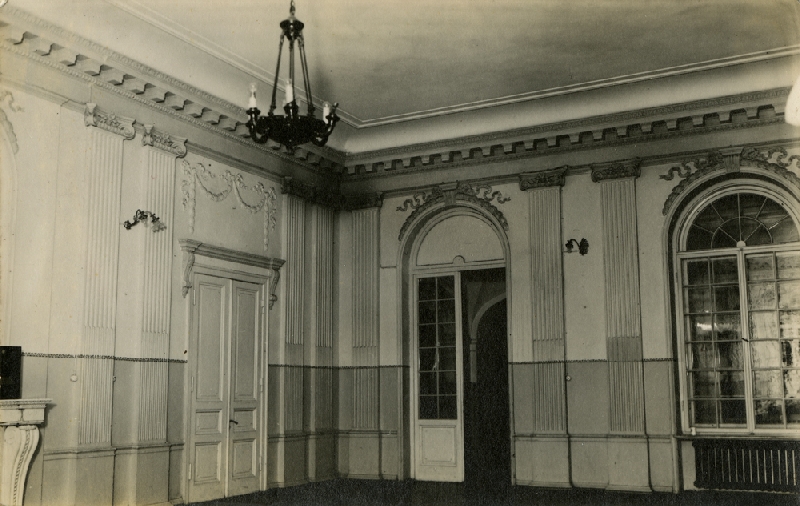 Taheva sanatorium (electrical equipment project). State construction company “Ehitaja”, arch. Alar Kotli, EAM _ 46 Ar 2.6.12, Estonian Museum of Architecture, 1939-1940.
Taheva sanatorium (electrical equipment project). State construction company “Ehitaja”, arch. Alar Kotli, EAM _ 46 Ar 2.6.12, Estonian Museum of Architecture, 1939-1940.
Estonian Land Reform of 1919
In 1918, the first Republic of Estonia was proclaimed. Related to that 1919, on the basis of the Estonian Land Reform, the manor was transferred from its former owner and divided into settlement farms.
The reforms expropriated 1065 manors (96.6% of large landowners were affected) of which only 57 manors came from Estonian owners with the rest owned mainly by Baltic Germans along with land from the Russian state and church land.
Taheva sanatorium
Taheva Sanatorium staff and patients (THM F 3837); Estonian Health Care Museum SA, 1926
In 1926, the Disabled Children’s Home was opened in Taheva Manor. The probable reason for opening the orphanage was that after the war many children had been left without parents and disabled.
In 1927, disabled children were removed and replaced by children with tuberculosis. The orphanage is renamed the Home Sanatorium for Children with Tuberculosis.
In 1944 the main building was destroyed by fire.
Julius Ilves
The land of the farm was given on 25.04.1947 to Julius Kusta ‘s son Ilves, for permanent use.
The devastation of 1980’s
Feed Barn. Photo by Margis Sein 23.05.2018
Of the outbuildings, the feed barn, smithy and ox stable were still in existence until the 1980s. E.Uppin has spoken about the wooden constructions of the smithy and barn roof chair system being dismantled by a tractor in the 1980s, by order of the chairman of the farm.
Ellu-Eesi Uppin (1939)
Photo: Arvo Meeks
The Executive Committee of Taheva Village sold the house on 07.05.1991. with a purchase and sale agreement to Ellu-Eesi Uppin.
Ellu-Eesi is an active woman who is one of the founding members of the Hargla Country Women’s Club founded in 2006 and the yard of Järve Farm designed by her received the Beautiful Estonian Home Pennant in 2011.
Vodka distillery new roof
2020 completed the new roof of the vodka distillery.
We installed a traditional chipboard roof, which has been the most common wooden roofing material in Estonia. Historical evidence shows that chip roofs were first built at the end of the 18th century and became common at the end of the 19th and in the beginning of the 20th century.
Used materials
https://sok.riksarkivet.se/sbl/Presentation.aspx?id=17440 https://register.muinas.ee/ftp/MKA%20eritingimused/2009_13_Taheva_kh_d_23286_23287_23288_23284_23285_avaldamiseks.pdf https://et.wikipedia.org/wiki/Bengt_Klasson_Horn https://et.wikipedia.org/wiki/17._sajand_Eestis https://et.wikipedia.org/wiki/18._sajand_Eestis https://en.wikipedia.org/wiki/Livonia http://www.ra.ee/apps/kinnistud/index.php/et/kinnistud/view?id=1223&knr=&hpr=&krundi_nr=&markus=&kinnistu_nimi=&eesnimi=&perenimi=&sisu=&perenimi_sisu=&majad=&tanav=&asustus_yksus=taheva&asustus_yksus_sisu=&liht_otsing=&_xr=eNotilEKgCAQBe%252ByFygrIp6HiaWkxBBqNYjw7mn1NfOGx1C4LWrN6D4RqB7krPdWQpwrMXxMK5XeglhirjJeLkuJ%252BRt4NSe%252FD9D%252BUxUOoI39EnkxZTYgE0in9AC33yUf https://kirj.ee/public/ESA/2012/esa_58-2012-39-57.indd.pdf


